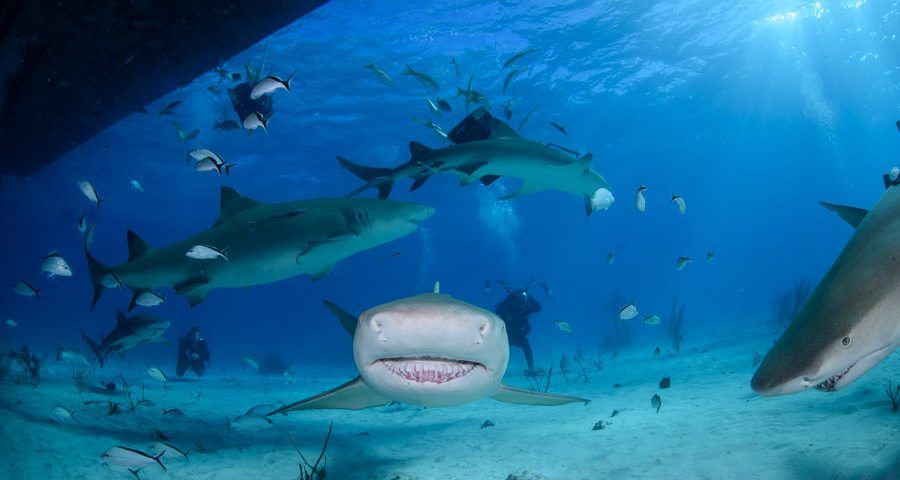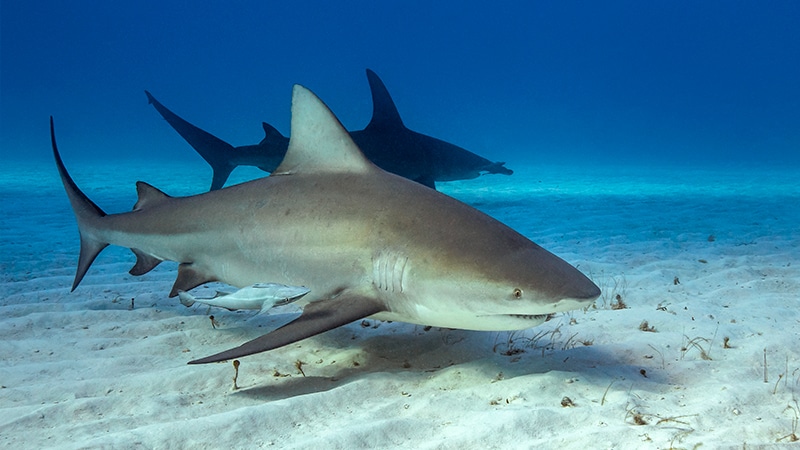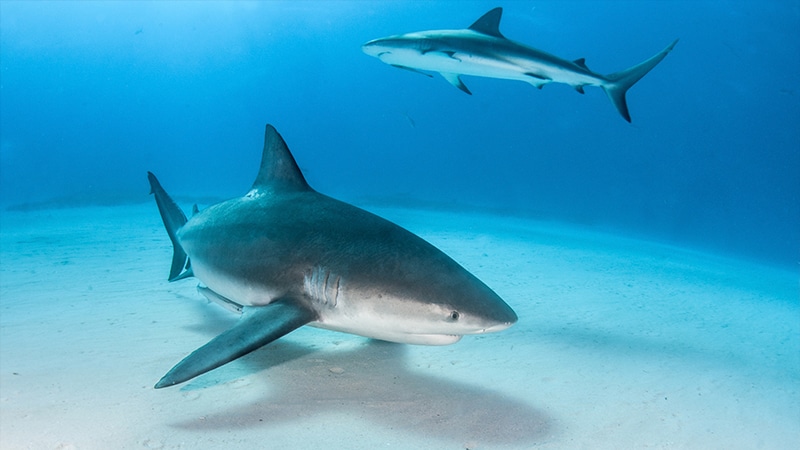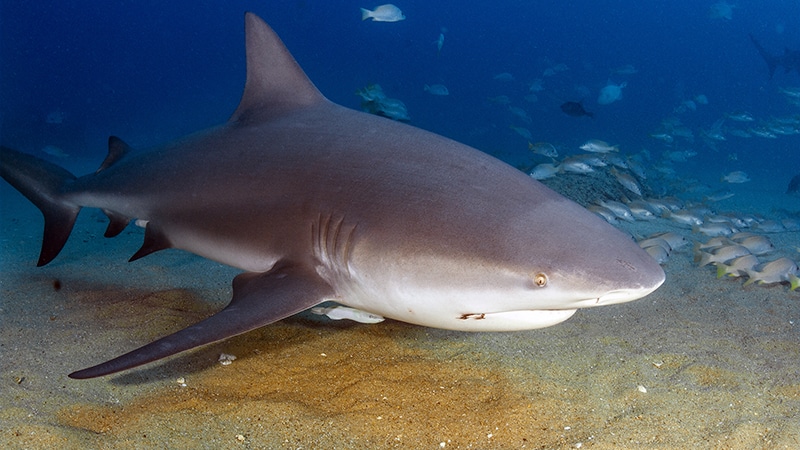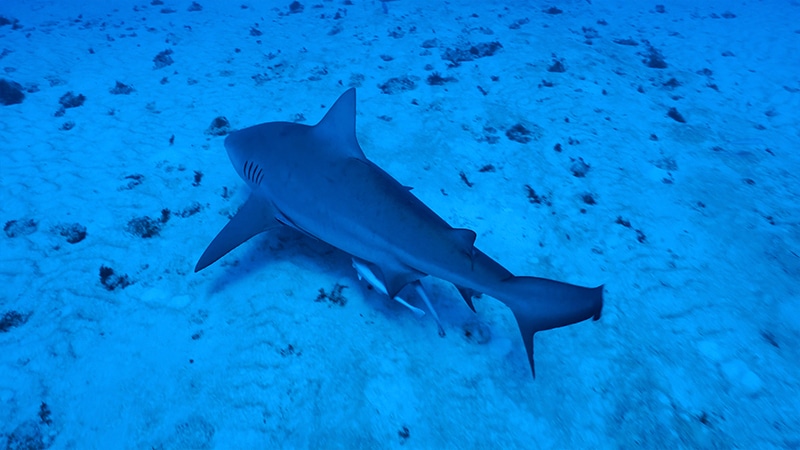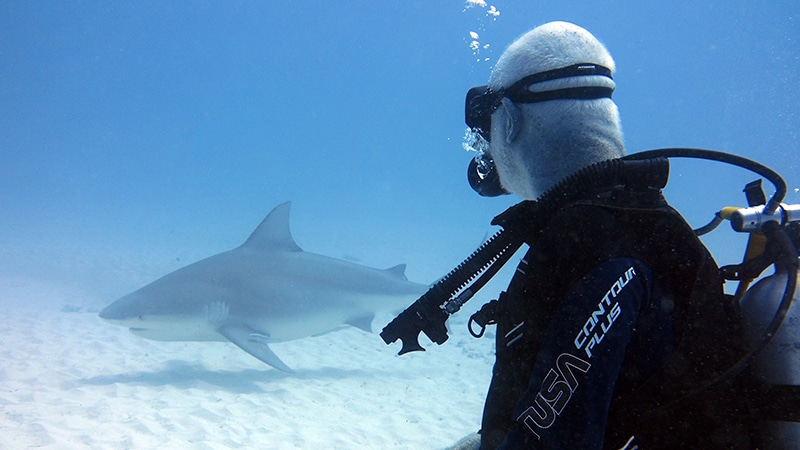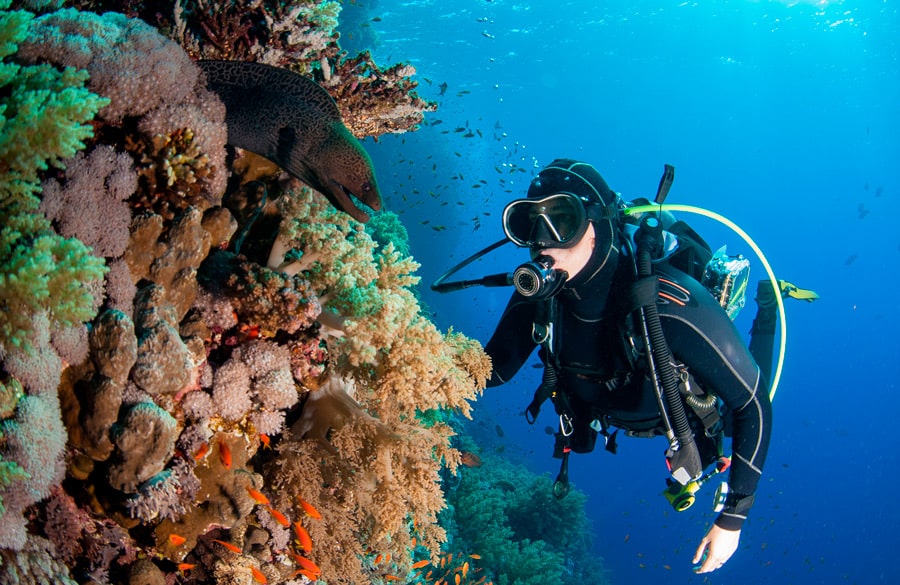5. Other Bull Sharks Interesting Facts
11. On top of the food chain
Bull sharks are at the top of the food chain, so only larger and more powerful animals can threaten them. In general, they are other sharks such as the white shark and the tiger shark.
12. Defensive vomiting
They can wake up predators by vomiting
13. We are their greatest threat
However, the greatest threat for bull sharks is human. Bull sharks are not in danger, but they are vulnerable to fishing. Commercially they are appreciated to sell their skin, meat, liver oil, and especially their fins.
14. Adaptive predators
Bull sharks exhibit a diverse diet, consuming a wide range of prey, including fish, rays, turtles, dolphins, and even other sharks
15. They are not hungry if they don’t want to.
They control the speed they digest; If there is no food, they digest more slowly, if there is excess, they speed up.
We do not need to say they are also affected by their habitat modifications and environmental changes. Now that you know all these bull shark facts, tell us, do you want to see them in person? Ask us how!




